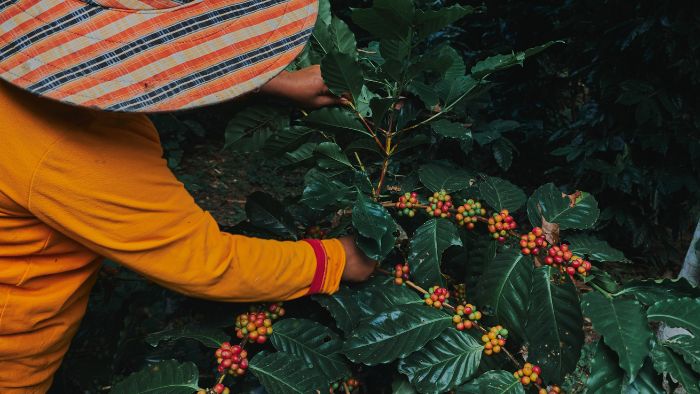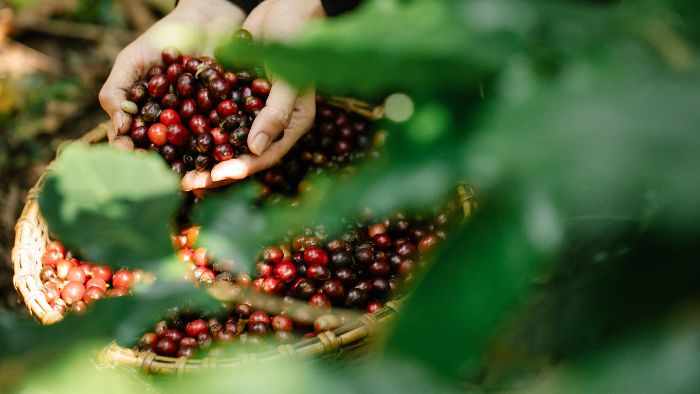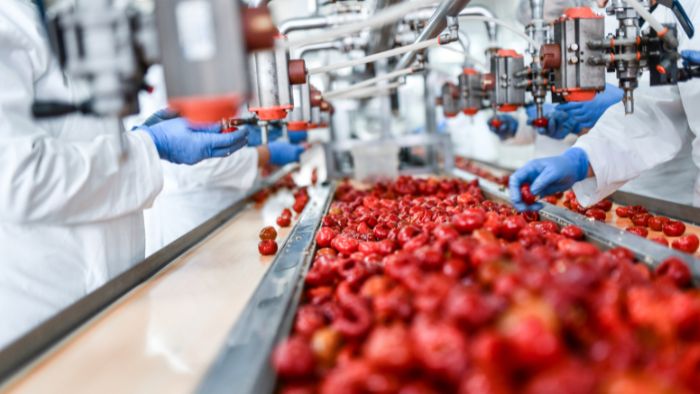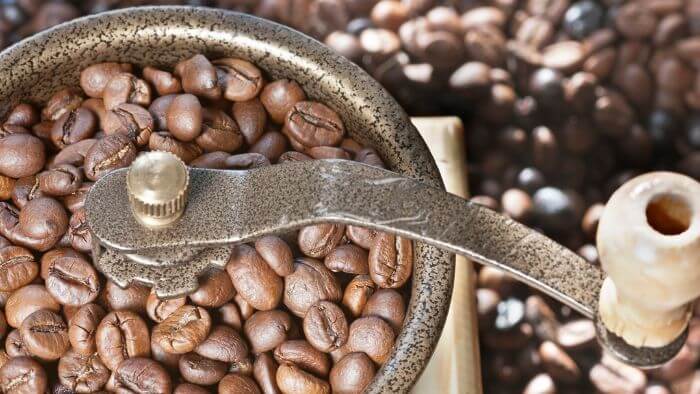Coffee production is a fascinating journey that starts from the seed and ends in your cup. Coffee is one of the most beloved beverages worldwide. Part of its appeal has been attributed to the fact that coffee has a higher caffeine content than most naturally produced beverages, such as tea and cocoa.
In this article, we will explore the entire process of how coffee goes from seed to cup.
Cultivating coffee plants
Coffee cultivation begins with the seeds, which are actually coffee beans. Once these beans are dried, roasted, and ground, they transform into the aromatic beverage we enjoy. However, when planted, these unprocessed coffee seeds can germinate and develop into coffee plants. The seeds are typically sown in large, shaded beds, where they sprout and grow into young seedlings.

These seedlings are then transferred to individual pots filled with specially prepared soil to promote healthy growth. During this stage, the seedlings are carefully shaded from the harsh sun and regularly watered until they become strong enough to be transplanted to their permanent location. To ensure the roots establish firmly, planting is ideally done during the rainy season when the soil remains adequately moist.
Coffee harvesting
Coffee bushes, once planted, generally start to produce fruit within 3 to 4 years. These fruits, known as coffee cherries, gradually change color from green to vibrant or dark red as they ripen, with the green cherries indicating unripeness. The speed of ripening is influenced by altitude and temperature, with cherries maturing more quickly at lower altitudes and higher temperatures.

Harvesting coffee is a meticulous process that can be done either by hand or by machine. Hand-picking allows workers to select only the ripe cherries, ensuring the quality of the harvest. This method is particularly labor-intensive as it requires workers to assess the ripeness of each cherry, making it also a costly process due to the labor involved. Since coffee cherries do not ripen uniformly, multiple rounds of picking, sometimes up to three, are necessary to fully clear a farm of its ripe cherries.
In contrast, in flat, expansive coffee farms like those in Brazil, harvesting is often done using machines. Regardless of the method, coffee cherries are typically harvested in one of two ways:
Strip Picking: This method involves removing all cherries from the branch simultaneously, whether by hand or machine.
Selective Picking: This labor-intensive technique involves picking only the ripe, red cherries and leaving the green ones to mature. This method is carried out at intervals of about ten days and is preferred for harvesting higher-quality Arabica coffee.
Most coffee-producing regions have one major harvest per year. However, countries like Kenya and Colombia experience two, with a primary and a secondary crop. The flavor of the coffee varies throughout the season; cherries harvested at the beginning or end of the season tend to have a less developed flavor compared to those picked in the mid-season, which is considered to have the best flavor.
Cherry processing
Post-harvest, cherries are processed swiftly to prevent spoilage, typically using one of two methods:

The traditional dry-processing method
The dry processing method is one of the oldest techniques used to prepare coffee cherries, particularly favored in areas with limited water resources. Often referred to as ‘natural’ or ‘unwashed’ processing, this method is commonly adopted by small-scale farmers. The process begins by spreading freshly harvested cherries on a large surface to sun-dry. Typically, the cherries are placed on slightly elevated drying beds to promote better air circulation.
Over the course of 15 to 20 days, the cherries are carefully turned and raked multiple times daily to prevent any fermentation and ensure uniform drying. To protect against overnight moisture absorption, the cherries are covered each evening. The duration of the drying phase can extend over several weeks, depending on the climatic conditions, with the goal of reducing the moisture content in the cherries to below 11%.
Once the drying process is complete, the cherries’ outer skin becomes dark, brittle, and easy to remove, signifying that they are ready for the next stage of coffee production. This method is prized for its simplicity and the distinct flavor profile it imparts to the coffee.
The modern wet processing method
The wet processing method, also known as the ‘washed’ method, is a more recent technique for removing the outer skin of coffee cherries. It is termed ‘wet’ because it utilizes water to facilitate both the movement of the coffee fruit through the process and the extraction of the beans. Initially, the cherries undergo a thorough cleaning to remove any unripe or overripe fruits, akin to the first method described.
Following cleaning, the cherries are processed through a pulping machine, which effectively squeezes out the skin while leaving the beans intact. This is achievable due to the inherent hardness of the coffee beans. Berries that still retain pulp are generally not ripe enough and are subsequently sorted out.
These sorted beans often yield a lower quality coffee. The pulping process leaves behind mucilage, a sticky layer, which is then placed into large tanks. Enzymes are added to these tanks to break down the mucilage. Frequent stirring ensures the complete dissolution of this viscous layer within about 24 hours. It is crucial to remove all mucilage to preserve the bean’s inherent flavor developed prior to processing.
Once the mucilage is fully dissolved, the beans are thoroughly washed to eliminate any residual stickiness. The now ‘naked’ coffee beans are dried in the sun for one to two days, though mechanized drying is also an option. After drying, the beans exit the processing stage and are classified into various grades. The processed and dried beans are known as parchment coffee.
Coffee milling
Prior to their introduction to the market, dried coffee beans undergo several processing steps to ensure their quality. These steps include:

Hulling
This initial stage involves the removal of the dried husk of parchment coffee, which consists of the exocarp, mesocarp, and endocarp. This step is essential for preparing the beans for further refining.
Polishing
Polishing coffee beans is an optional process that some millers may choose to omit. This step removes any remaining silver skin that the hulling process might have missed. While polished beans are often regarded as higher quality due to their cleaner appearance, the actual difference in taste or content between polished and unpolished beans is minimal.
Grading
The subsequent grading process involves sorting the beans by size and weight. This is a meticulous process where beans are also inspected for color inconsistencies and other imperfections. Human sorters manually remove any flawed beans, though a more efficient method involves using pneumatic sorting with an air jet, which separates lighter beans from heavier ones. Additionally, beans are sized by passing them through a series of screens with holes calibrated to only allow beans of specific sizes to pass, typically on a scale from one to ten.
At the conclusion of the milling process, only the finest beans are selected and packaged for sale, primarily targeting high-end markets. In some regions, beans that do not meet these premium standards are not discarded; instead, they are processed and sold as lower-quality coffee products. This ensures that no part of the harvest goes to waste, aligning with sustainable practices in coffee production.
Coffee packaging and labeling
Packaging plays a critical role in maintaining the quality and freshness of coffee, especially once it has been ground. Ground coffee is particularly susceptible to flavor loss when exposed to air, which can also cause the coffee to clump together.
To prevent these issues, coffee is typically packaged in airtight containers. It is essential that these containers are resealed meticulously after each use to maintain the coffee’s optimal freshness and flavor.
In addition to careful packaging, proper labeling is equally important. Labeling provides consumers with vital information such as the type of coffee, the roast date, the origin, and any special brewing instructions. It can also include details about the coffee’s flavor profile and whether the beans are organic or fair trade.
Effective labeling not only complies with regulatory standards but also enhances consumer trust and satisfaction by ensuring transparency and traceability of the product.
By combining robust packaging with comprehensive labeling, coffee manufacturers can ensure their products remains fresh and informative for consumers.
LMS offers first-class beverage labeling machines and bag labeling machines. Whether it is filled with coffee or coffee powder bags, we can provide you with excellent labeling equipment, so that you don’t have to worry about any coffee labeling problems during the production process.
Conclusion
Coffee production is a very labor-intensive process, but nowadays, due to the mechanization of production, the process is slowly beginning to be simplified, allowing more food processors to enter the industry, but at the same time requiring a great deal of expertise in order for the flavor of your coffee to meet the consumer’s expectations.
